Trip Report: Oasis of the Seas – Mediterranean Cruise 2024
Today was another amazing day — the kind that perfectly captures why we love traveling. From shimmering blue coastlines to ancient stone streets frozen in time, it felt like stepping into two different worlds within the same afternoon.
We booked a ship excursion from Naples that took us first to Salerno, where we boarded a small boat for a ride along the Amalfi Coast. Later, we toured the hauntingly beautiful ruins of Pompeii, a place that left us speechless.
Sailing the Amalfi Coast
If ever there was a place that lived up to its legend, it’s the Amalfi Coast. Stretching along the southern edge of Italy’s Sorrentine Peninsula, this 30-mile ribbon of coastline is a masterpiece of cliffs, pastel villages, and sapphire-blue water. Towns seem to spill down the mountainside, their homes stacked like watercolor brushstrokes against the sea.
We set sail from Salerno, tracing the curve of the coast toward Amalfi, then looping back again — a route that gave us postcard views at every turn. From the deck, each town revealed its own charm:
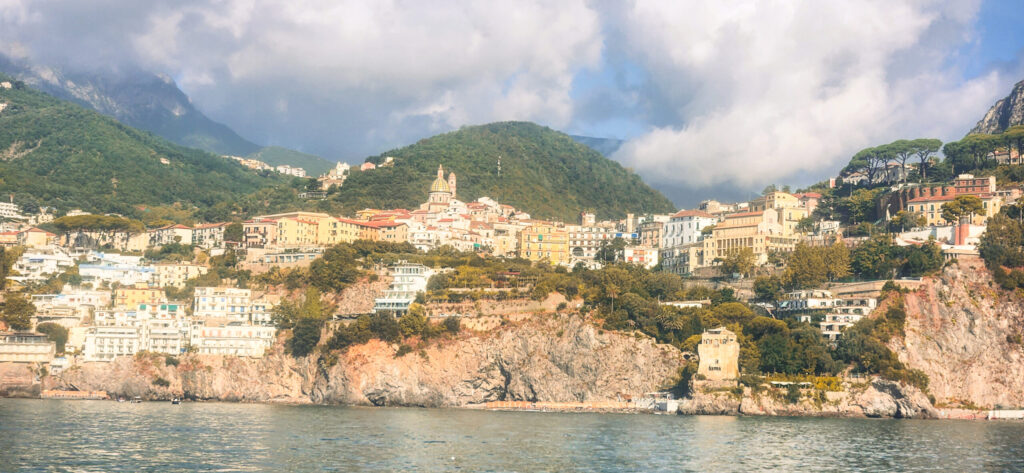
Vietri sul Mare — the first jewel of the coast, famous for its bright ceramics and cheerful facades.
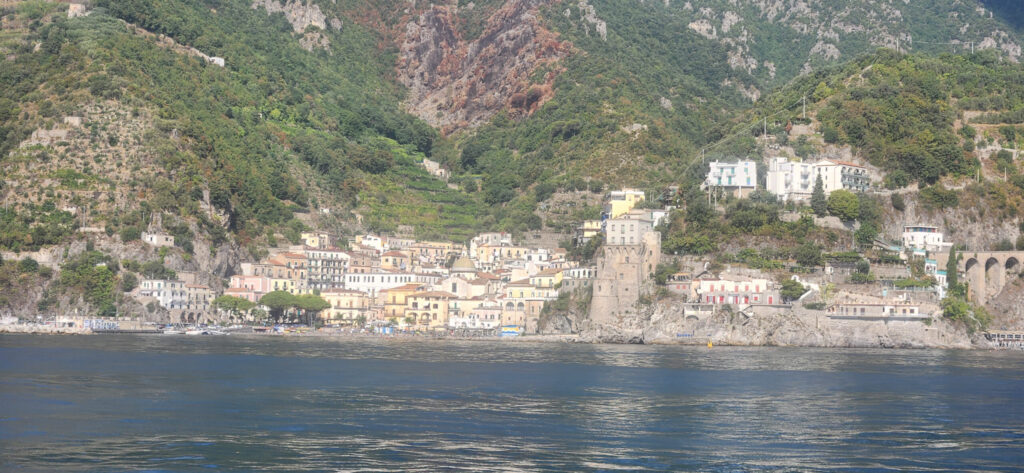
Maiori and Minori — sister towns separated by a single headland, each with golden beaches and pastel promenades.

Amalfi — the heart of the coast, once a powerful maritime republic, now a blend of history and effortless Italian elegance.

Atrani — so small it’s easy to miss, tucked into a cliffside fold beside Amalfi, charming in its simplicity.
As we sailed, we watched the coast shift with the light — morning haze giving way to brilliant blue, then softening again as the sun began to set behind the hills. The Pilot and I kept taking photos, but nothing could truly capture the feeling of it — the sound of waves against the hull, the scent of salt and lemon groves, the way each town seemed to whisper its own story as we passed.
We stopped in the town of Amalfi, where the streets were narrow and full of life — cafés spilling out into piazzas, souvenir shops stacked with ceramics, and the smell of lemons everywhere. We wandered for a bit, cooled off with gelato, and stood in the shade of Amalfi Cathedral, watching the swirl of visitors and locals go by.
It was the kind of moment where you just stop and soak it in — the sun, the sound of the sea, the hum of Italian conversation — knowing you’ll never be able to fully capture it again.
Ancient Pompeii
After returning by boat to Salerno, our tour continued inland to the ruins of Pompeii — and I have to admit, I knew very little about it before this trip. I’d heard the name, of course, but I had never truly understood the story.
Walking through the gates, I expected crumbling ruins and dusty stones. What I didn’t expect was how complete everything still felt — entire streets, homes, and even artwork preserved just as they were the day Mount Vesuvius erupted. It was less like visiting an archaeological site and more like stepping straight into the past.
The Streets of a Lost City
The first thing you notice are the streets — real Roman streets, carved by time and chariot wheels. Deep ruts mark where carts once rolled, and raised stepping stones cross the roads so people could keep their sandals dry when the streets filled with water. Standing there, it hits you how advanced this city was. These weren’t simple ruins; this was a fully designed community frozen mid-motion.
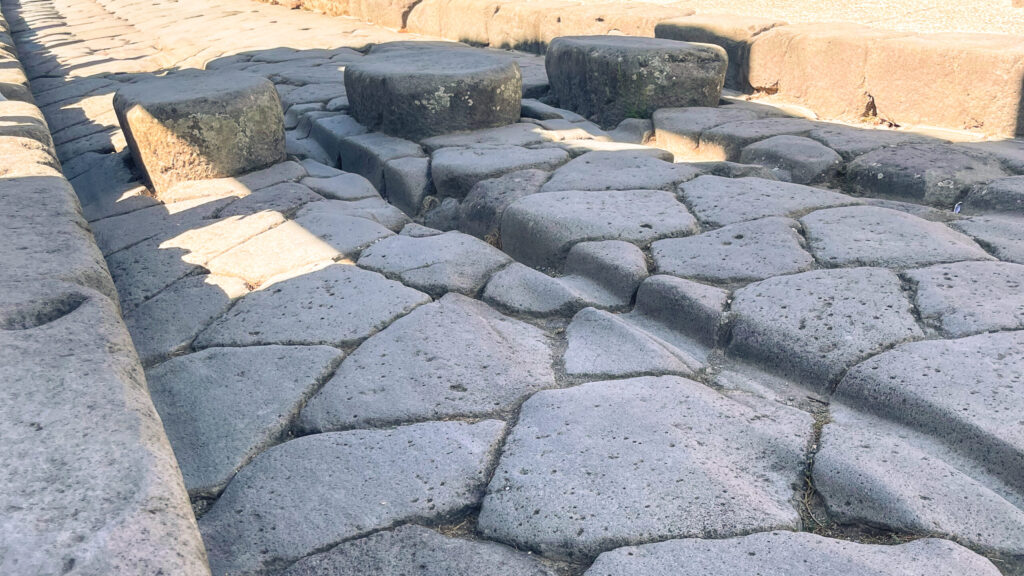
Homes, Frescoes, and Everyday Life
Inside the homes, color still clings to the walls — reds, blues, and golds that survived nearly two thousand years. Some of the frescoes are so detailed they look freshly painted. You can picture families gathering in open courtyards, cooking in small kitchens, or praying in tiny shrines tucked inside their walls. It’s ordinary life — preserved in extraordinary detail.

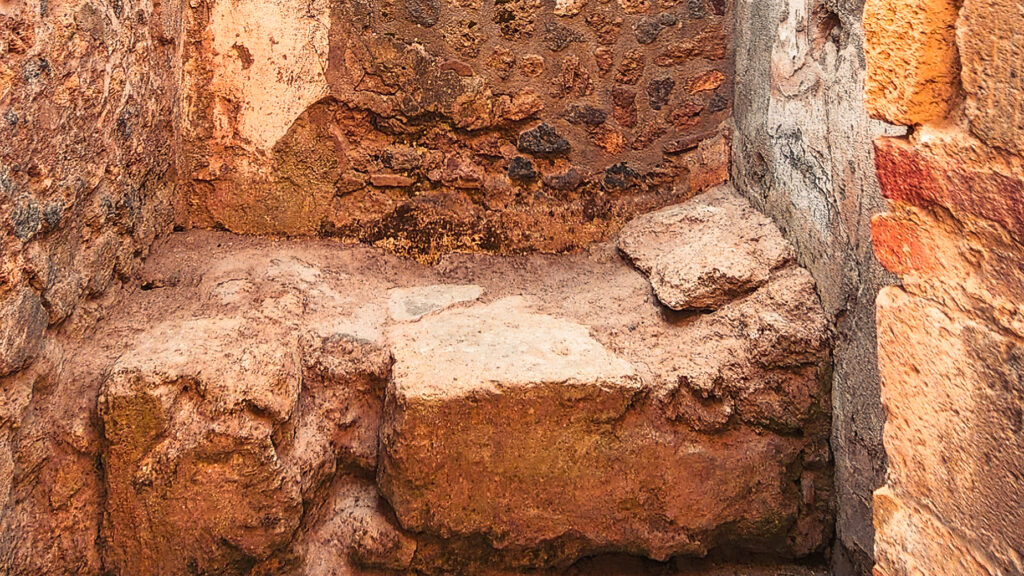
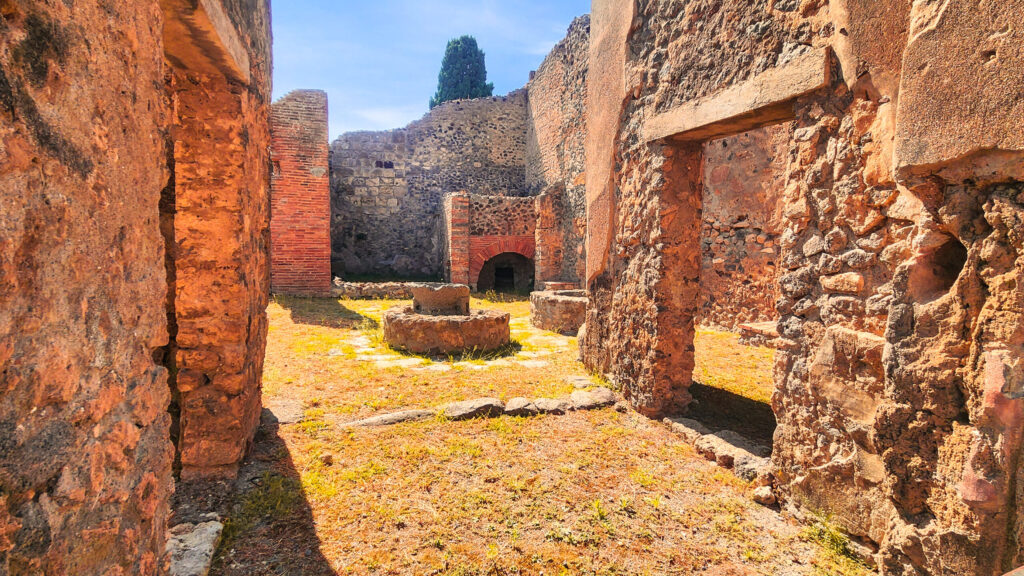
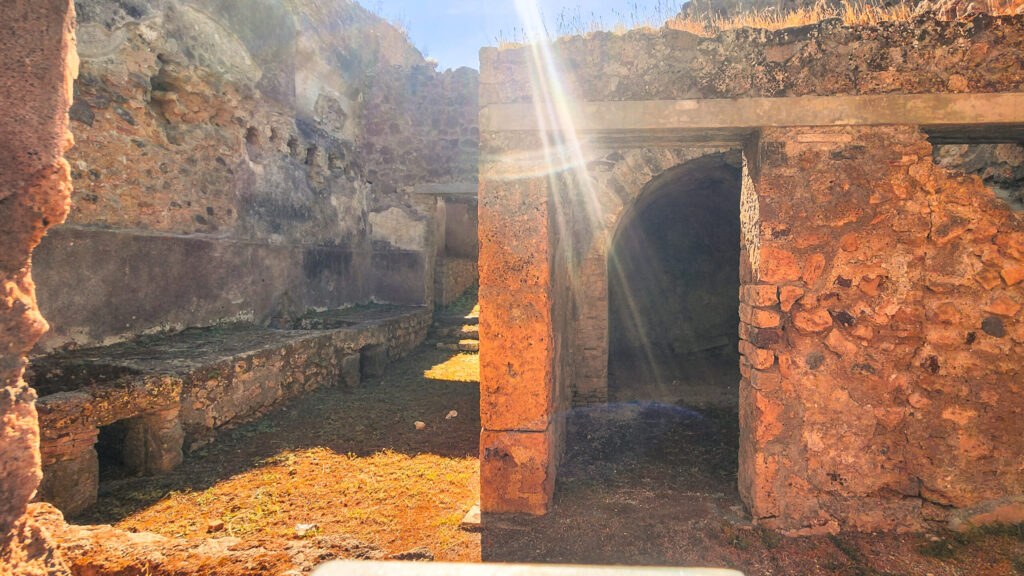
The Forum and Temples
From the heart of the city, the Forum opens up in every direction. It’s easy to imagine it bustling with vendors, priests, and politicians. And then you look up — and there’s Vesuvius towering in the distance. Peaceful now, but it’s impossible not to think about the day it changed everything.
Our guide explained how advanced Pompeii’s bathhouses were — heated floors, marble pools, steam rooms, and clever plumbing systems that would impress even today. Just beyond them, the amphitheater still stands strong. It’s smaller than Rome’s Colosseum, but easier to imagine filled with locals gathered for plays, speeches, and music.
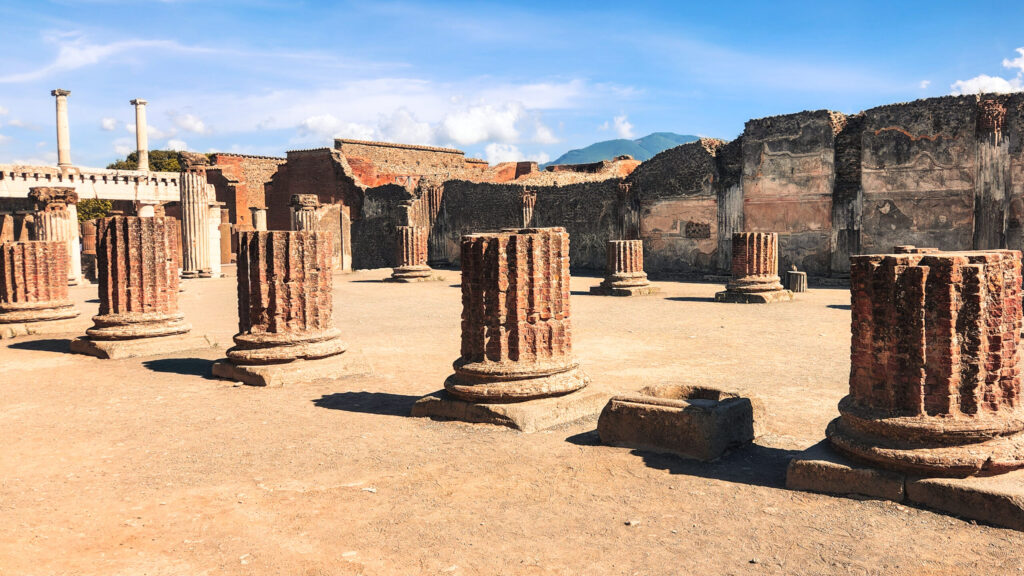
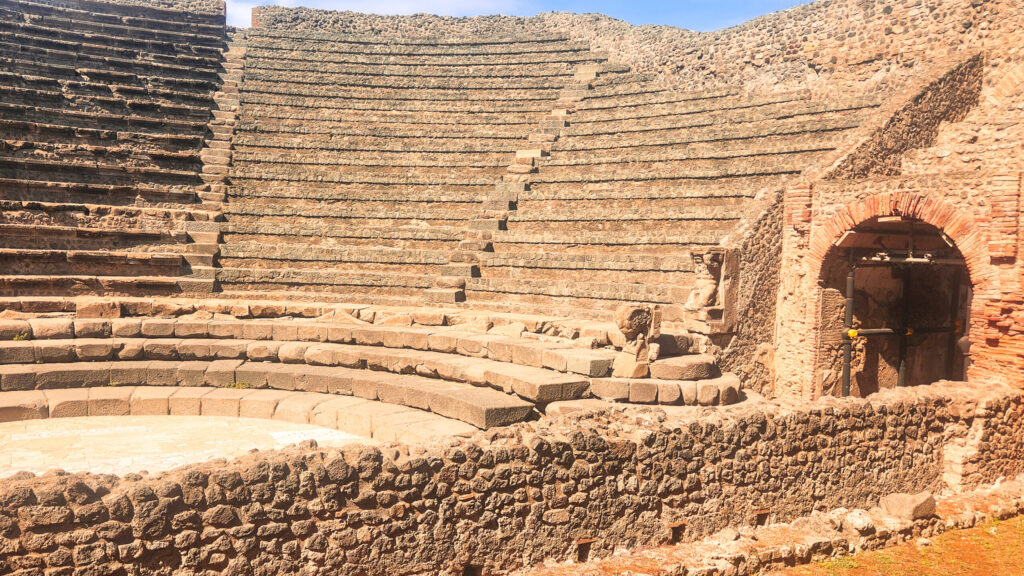
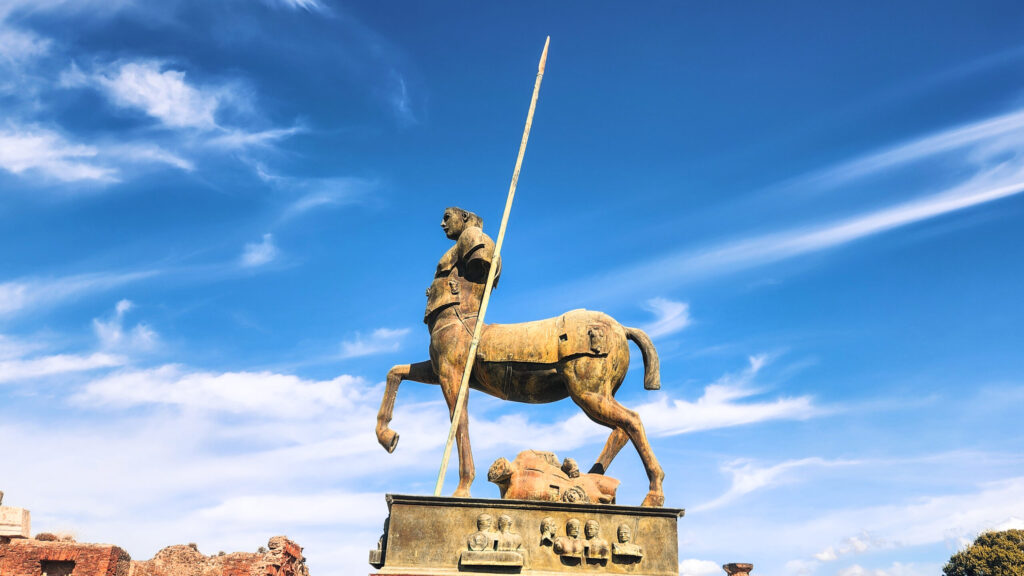

The Human Story
And then, the hardest part — the plaster casts. These are the shapes of real people, caught in their final moments. Some curled as if sleeping, others reaching out. It’s sobering. You can read about Pompeii’s destruction, but seeing those forms in person — that’s something you never forget. It puts everything else into perspective.
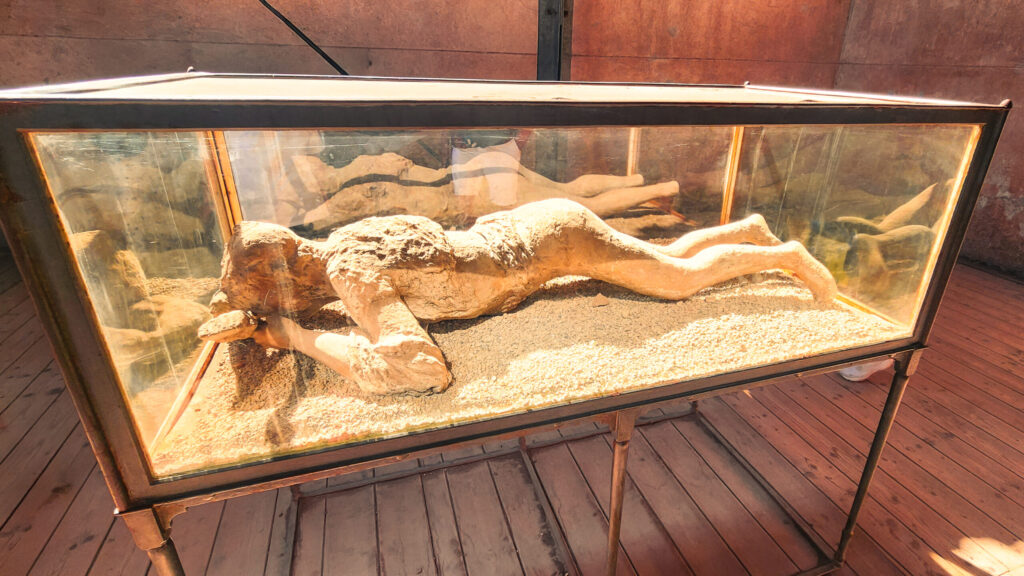
Reflections on the Day
By afternoon, the heat was intense — the kind that drains every ounce of energy. We were exhausted, sunburned, and sweaty, but also completely in awe. It was one of those travel days that takes everything out of you and still feels worth every step.
That evening, as we sailed away from the coast, I looked back toward Mount Vesuvius, its dark outline rising above the city lights. It’s calm now, but standing there earlier in the day, surrounded by what it left behind, was a powerful reminder of how quickly life can change.
Pompeii wasn’t what I expected. It was more alive, more human, and far more moving than I ever imagined.
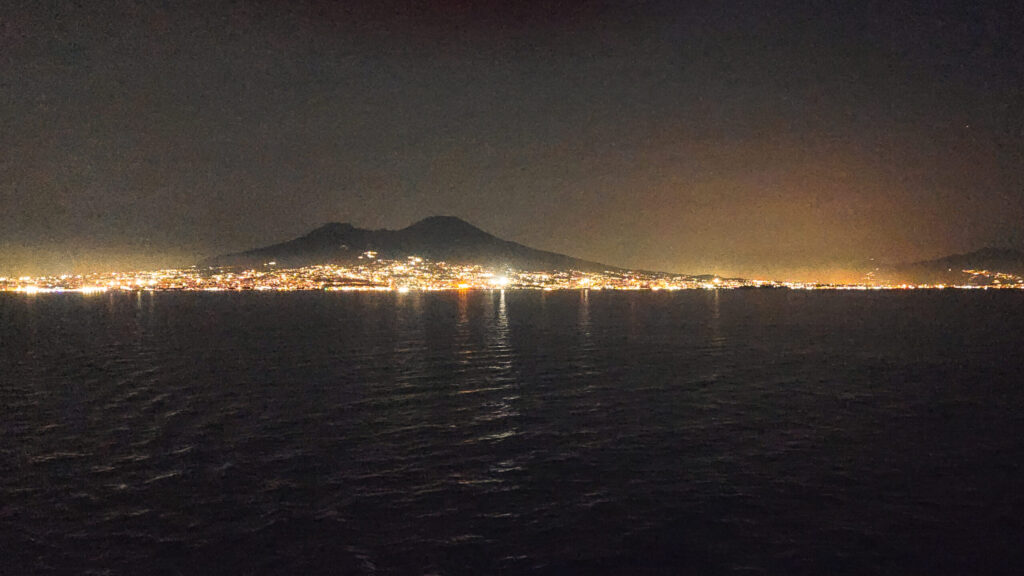
After we got home, we watched the Pompeii movie, and it hit even harder — knowing we had walked those very streets, stood in those same spaces, and felt a small part of the story that once unfolded there.
Tomorrow, we head back toward Spain for a much-needed day at sea, ready to rest and relive all we’ve seen this week.

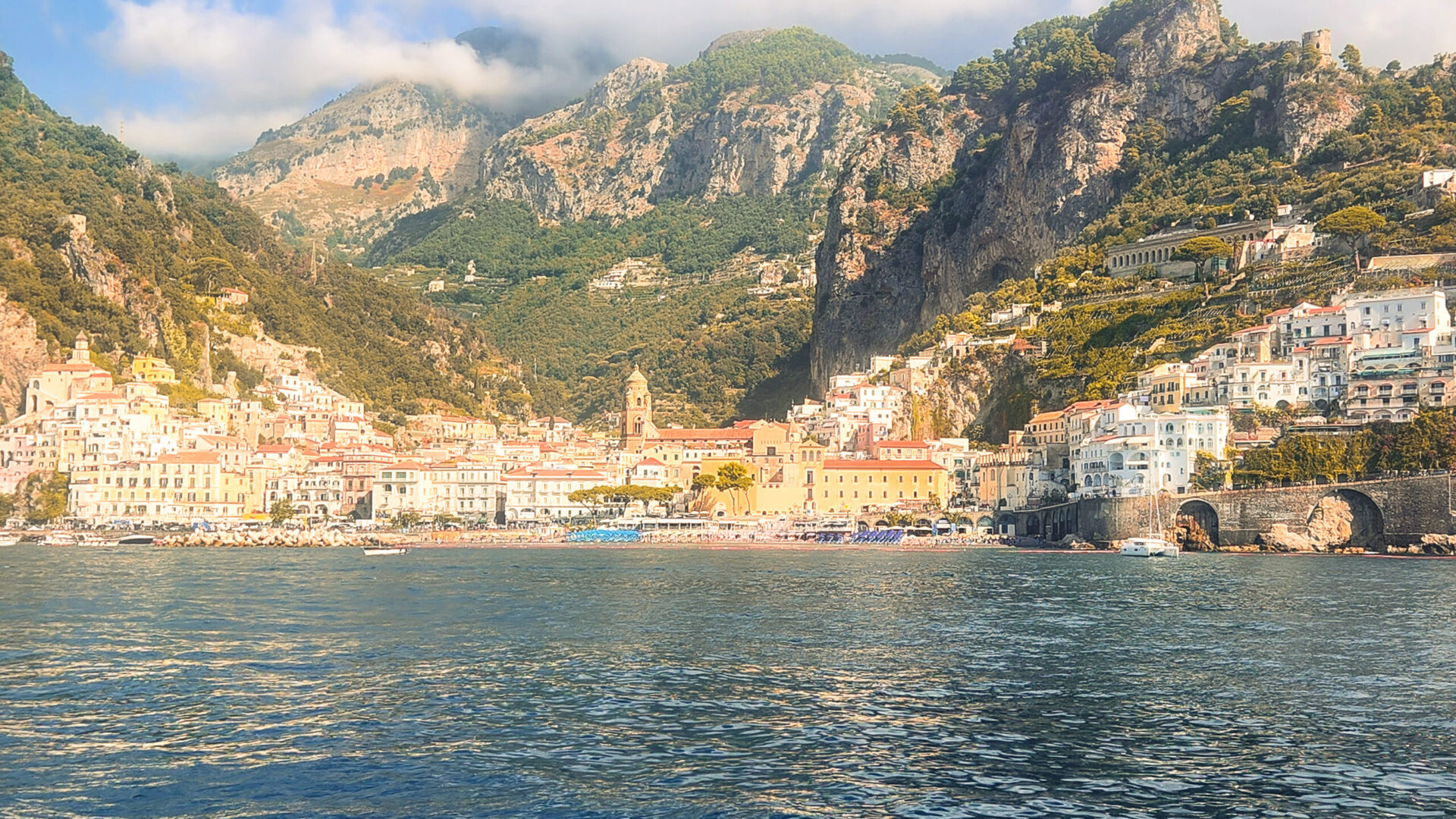
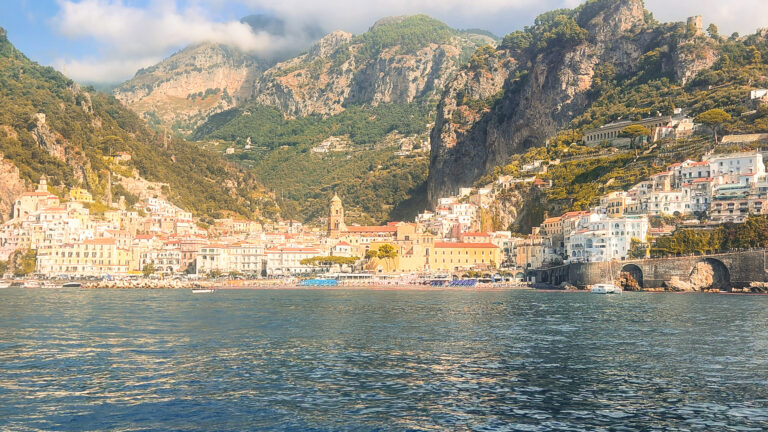


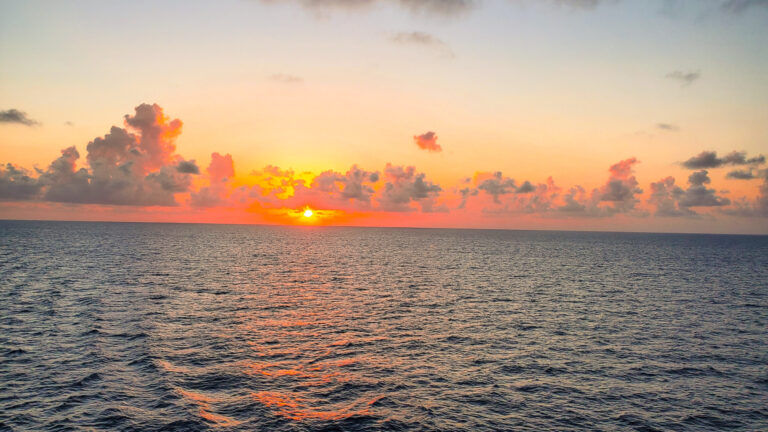
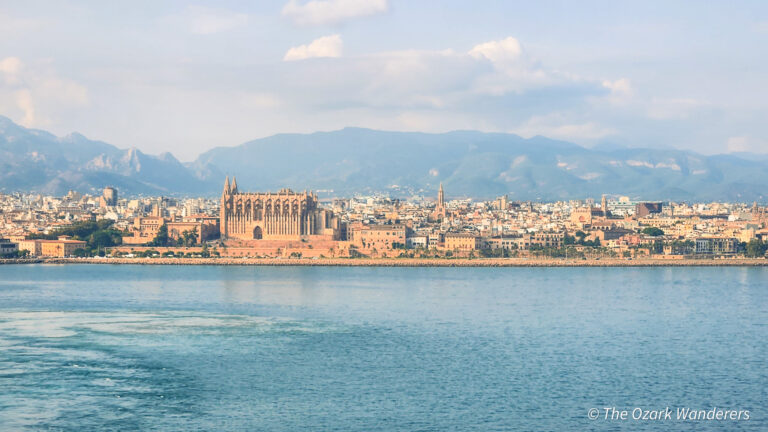

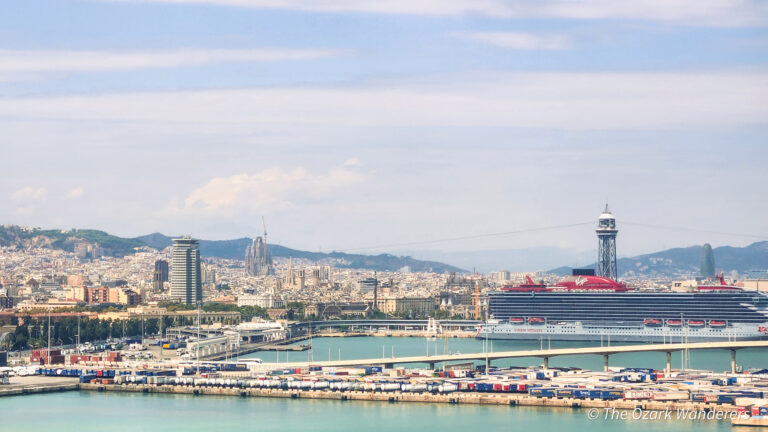
Leave a reply